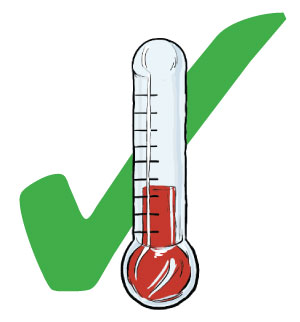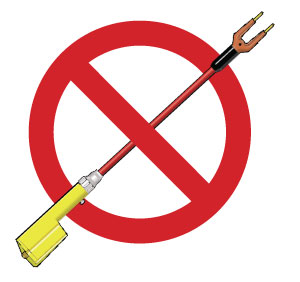What can a herdsman or worker do about cow comfort in the summertime or for those cows suffering from heat stress? The answer: Do more, earlier and quicker, for cows when they get sick.
Understand that cows produce heat continuously; they are like a walking furnace. Every hour of the day their bodies convert feed to milk. This reaction produces excess energy in the form of “heat of production” that the cow must eliminate through respiration. As long as the outside temperature is lower than her body temperature (101.5 degrees), she rids herself of the extra heat by breathing it to the outside.
But when the outside heat and humidity are higher than her body temperature, the cow starts panting in an effort to rid herself of that heat buildup. This produces stress, discomfort, possible accumulation of toxins and reduced immune response in cows susceptible to infection. Normal cows suffering from heat stress eat less, produce less milk, lose body condition and have lower pregnancy rates. Sick, heat-stressed cows suffer even more. Cows with retained placentas, metritis, mastitis and pneumonia that normally respond well to your treatments may not respond, or may even die, when heat stress complicates their sickness.
Your first responsibility is to recognize and prevent the conditions that you can control to reduce stress and discomfort. For example, do not lock up groups of cows for one minute longer than necessary when it is hot. Organize your work, start early and “get it done” so that you can quickly unlock the cows you’ve bred, treated or injected. Cows naturally stand to eat or get milked; they lay down most of the rest of the time. Don’t penalize cows susceptible to the effects of heat stress by forcing them to stand longer than necessary because you’re not efficient, focused or unaware of the negative impact you’re having on them.
Treat individual animals with care and concern. Here’s a couple of tips about cow treatments; then think of a lot of other examples you can use to help stressed animals on your dairy.
When giving an intravenous treatment, don’t pull the cow’s head around and tie her so tight that she is in this uncomfortable position for a long time. Rather, prepare your medicines and have the administration apparatus ready before you restrain the animal. Then tie her head only as tight as necessary so that you can thread the needle in the jugular vein quickly and safely. Release the cow as quickly as possible when the treatment is completed.
If the cow you need to treat resists walking into the chute, don’t automatically reach for the cattle prod. Instead, push her, put pressure on her tail and work her into the chute.
If you’re foot trimming or treating a lame animal, don’t leave the animal on the tilt table or harnessed in the foot trimming chute any longer than necessary. Discomfort puts extra stress on an already stressed animal!
Watch and evaluate fresh and sick cows more thoroughly during periods of heat stress. Heat stress, or any form of stress, is particularly difficult on fresh and sick cows. “Normal problems” quickly become severe problems in these cows. For example, a cow with a retained placenta for three or four days may never get sick under normal conditions. (Most drop the placenta without medication.) But under heat stress, this placental tissue decays rapidly inside the uterus. Then bacteria multiply and grow at very rapid rates, and the decaying tissue produces toxins that make the animal very sick. The result is systemic metritis, requiring treatment with antibiotics, anti-inflammatory medicines and supportive fluid therapy. Follow your owner’s and your veterinarian’s treatment protocols, but administer extra fluids and anti-inflammatory medications earlier during heat stress conditions than is necessary during other times of the year.
Heat stress will challenge your skills as a herdsman and a cow person. So use the skills and the tools you’ve developed in evaluating fresh and sick cows. First, watch cows more closely for the early signs of sickness such as reduced appetite, sluggish attitude and dull eyes. Second, use your thermometer. I often hear the excuse “thermometers don’t work when it is hot.” Not true! On hot days, identify a couple of cows that are normal (eating, alert, good manure and udder fill). Check the temperature of these cows. If their temperatures are less than 102.0º, then that is NORMAL for all cows on that day; a higher temperature on a cow you question as normal, probably means this cow is abnormal and suffering from early infection or illness. If the temperature on the normal cows is 102.5º for example, then this is “normal” for heat-stressed cows for that day. You should still interpret the cow you are examining as “sick” when, by comparison, her temperature is greater than 102.5º. Initiate appropriate treatment before it is too late!
Don’t compound heat stress effects on groups of cattle because you are inefficient or unprepared. Organize your work, get at it and get done as quickly as possible. PD

-
Tom Fuhrmann, DVM
- President
- Dairy Works
- Email Tom Fuhrmann
Summer do's & don'ts

DO still use a thermometer to identify sick cows.
DO give extra fluids to all sick cows.

DON’T use a cattle prod.
DON’T keep cows in headlocks longer than absolutely necessary.







